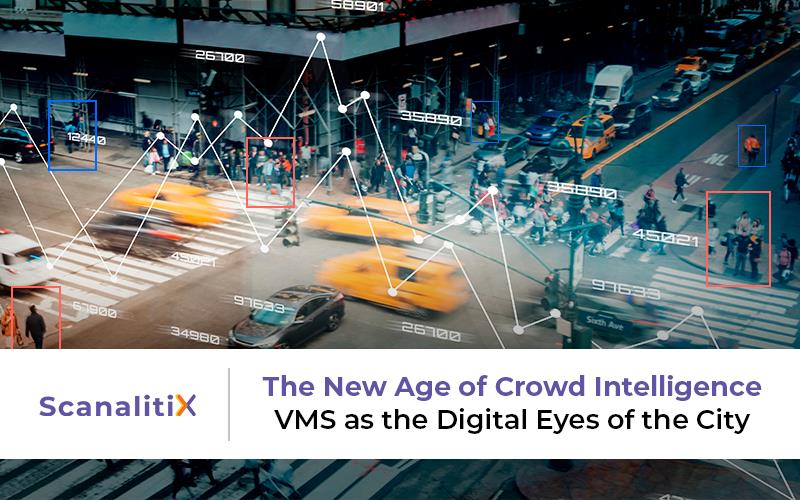Multi-Level Monitoring: Enhancing Response Time and Accuracy
How Multi-Level Monitoring Enhances Response Time and Accuracy As the digital ecosystem grows more complex and interconnected, ensuring systems’ performance, security, and reliability has become more critical. As businesses scale, so do their systems, becoming increasingly complex, distributed, and dependent on real-time responsiveness. That is why multi-level monitoring has become essential. Tracking a single server metric or monitoring error logs alone is insufficient to ensure system reliability. You need deep, layered visibility into every part of your infrastructure to stay ahead of problems before they impact users. What Is Multi-Level Monitoring? Multi-level monitoring refers to implementing monitoring across multiple layers of your tech stack. This includes everything from infrastructure and networks to applications, user behavior, and third-party integrations. Instead of depending on a single tool or metric, multi-level monitoring offers a comprehensive and connected view of your system’s performance. Typical Levels Include: Infrastructure Monitoring: CPU usage, memory, disk I/O, server uptime. Application Monitoring: Error rates, response times, API throughput. Network Monitoring: Packet loss, latency, DNS performance. User Experience Monitoring: Real user monitoring (RUM), synthetic tests. Security Monitoring: Unusual activity, login attempts, firewall events. Third-Party Service Monitoring: Status of external APIs and services your system depends on. By collecting data at all these levels, organizations can detect anomalies sooner. This helps identify root causes more quickly and enables more effective automation of response workflows. Why Traditional Monitoring Falls Short Most legacy systems rely on single-point monitoring, such as logging server uptime or tracking application crashes. While that helps catch some problems, it leaves major blind spots: What if the app is “up” but returning 500 errors? What if your users are seeing timeouts, but server health looks fine? What if a third-party service is the bottleneck? Traditional setups often trigger alerts after users are already affected. That is where multi-level monitoring excels, connecting the dots before your customers experience any issues. How Multi-Level Monitoring Improves Response Time When incidents happen, every second matters. Slow response times can result in lost revenue, SLA violations, and unhappy customers. Companies with full‑stack observability are 18 % more likely to resolve critical outages in 30 minutes or less than those without it. Multi-Level Monitoring accelerates response in three key ways: 1. Faster Detection With multiple levels actively tracking system behavior, you are more likely to catch issues in real-time. For example: A surge in user latency + API error spike + slow DB queries? That is a red flag that your app is under stress. Multi-level monitoring helps trigger early alerts, sometimes even before end users notice anything’s wrong. 2. Intelligent Alerts Alert fatigue is real. If your team is getting 50 pings a day from random services, they will start tuning them out. Multi-level monitoring reduces noise by correlating signals across different layers: Instead of five separate alerts, you get one unified incident report. This improves triage efficiency and makes your alerting meaningful. 3. Automated Escalation and Resolution When monitoring is tiered and interconnected, you can automate responses based on severity and impact: A failed health check + DB overload? Auto-restart the service. Multiple failed login attempts? Trigger a security review workflow. Multi-level monitoring systems track performance and issues across different system layers. These systems often integrate with incident response tools to significantly reduce the Mean Time to Resolution (MTTR). How It Boosts Accuracy in Diagnosing Issues Having access to data from multiple layers gives teams better context when something breaks. You are not just guessing; you are investigating with a complete map. Here is how: 1. Root Cause Analysis (RCA) Correlating signals from the app, infra, and network levels helps teams identify the real cause behind issues: Instead of blaming the code, you might find it is a DNS resolution delay. Or discover that a spike in app errors matches a new deployment. Multi-level monitoring enables precise diagnostics, not just educated guesses. 2. Trend Analysis and Prevention By analyzing performance over time across multiple levels, you can detect patterns and predict failures: Is CPU usage slowly rising across clusters? Are database queries taking longer every week? These are subtle signs you would not catch with siloed monitoring. Multi-level monitoring supports proactive maintenance instead of reactive firefighting. 3. End-to-End Visibility From the user’s click to backend processing and third-party responses, multi-level monitoring traces the entire journey. This end-to-end visibility improves: Service Level Objective (SLO) tracking User experience assurance Compliance with performance SLAs Real-World Use Case: E-Commerce Platform Imagine an e-commerce site running a major promotion. Suddenly, customers start complaining that the checkout page is freezing. With traditional monitoring, the server logs might show “everything is up.” But with multi-level monitoring in place, the team sees: Increased user latency on mobile devices High response time on the payment gateway API Network packet loss in a specific AWS region These signals work together to give the operations team clear visibility across multiple levels. This visibility allows the operations team to reroute traffic, notify the payment partner, and restore smooth service within minutes. Implementing Multi-Level Monitoring: Best Practices A multi-level monitoring strategy can significantly improve your system’s reliability, performance, and incident response times. By gaining visibility across all layers of your stack, you can detect issues faster and resolve them more effectively. If you are planning to adopt this approach, here are some best practices to guide you: Start with Your Critical Path: Monitor the journey your users take, from request to response. Integrate Logging, Tracing, and Metrics: Use the “three pillars of observability” together. Unify Dashboards and Alerts: Do not let monitoring tools live in silos. Invest in Automation: Use thresholds and machine learning to reduce manual alerting. Review Regularly: Monitoring is not “set it and forget it.” Tune your levels as your system evolves. Final Thoughts In a complex, distributed world, relying on single-layer monitoring is like flying a plane with one gauge. Multi-level monitoring is the modern standard for teams that care about uptime, performance, and customer trust. Scanalitix is built on this philosophy at its core. It offers businesses a powerful, intelligent, and unified








